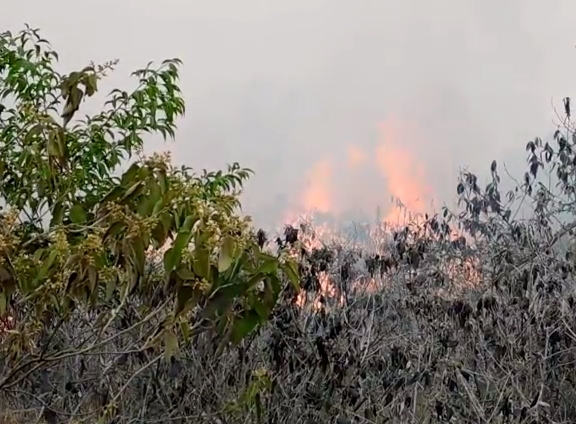

New research quantifies effects of policies prohibiting use of fire as a land management method (photo: Giselda Durigan)
New research quantifies effects of policies prohibiting use of fire as a land management method.
New research quantifies effects of policies prohibiting use of fire as a land management method.

New research quantifies effects of policies prohibiting use of fire as a land management method (photo: Giselda Durigan)
By José Tadeu Arantes | Agência FAPESP – Ants are considered excellent indicators of an ecosystem’s state of conservation. A new study shows that a 30-year ban on the use of fire as a land management method in the Cerrado, Brazil’s giant savanna, has led to the loss of 86% of the biodiversity in the ant population. Endemic plant species richness declined by 67% in the same period and for the same reason.
Results of the study were recently published by Giselda Durigan and collaborators in the journal Science Advances.
Durigan teaches forest science to graduate students at São Paulo State University (UNESP) and ecology at the University of Campinas (UNICAMP). She has conducted research on the Cerrado for over 30 years, and along with her scientific studies, she has campaigned vigorously to persuade decision makers and the general public that policies banning the use of fire should be revised.
Fire is not the “enemy” portrayed by demonizers and the ignorant, according to Durigan. If used with intelligence and care, it is an effective land management method and indispensable to the conservation of savannas (read more in “Friendly fire helps conserve savanna” at: agencia.fapesp.br/26064).
“Without management by fire, the vegetation becomes denser, the canopy formed by tree crowns casts the ground in shadow, and understory plant species disappear. The Cerrado is transformed into poor forest, with a huge loss of biodiversity,” Durigan told Agência FAPESP.
The study quantified this loss in terms of the disappearances of ant and plant species, she explained. Other studies, not yet published, show that the same process of destruction is affecting reptiles and amphibians.
“In addition, the increase in biomass causes dramatic damage to river regimes. The water that should fill underground reserves and springs is consumed by the vegetation. Eight of Brazil’s 12 hydrographic regions originate in the Cerrado, and eight of our ten largest hydropower plants depend on water from the Cerrado,” Durigan said.
“Jeopardizing the existence of the Cerrado means jeopardizing water, the most threatened resource today and the most fundamental to humanity’s survival. In only five decades, half of the Cerrado has already been lost. Conservation of the remainder requires urgent measures.”
The article “The biodiversity cost of carbon sequestration in tropical savanna” (doi 10.1126/sciadv.1701284) by Rodolfo C. R. Abreu, William A. Hoffmann, Heraldo L. Vasconcelos, Natashi A. Pilon, Davi R. Rossatto and Giselda Durigan can be read at advances.sciencemag.org/content/3/8/e1701284.full.
Republish
The Agency FAPESP licenses news via Creative Commons (CC-BY-NC-ND) so that they can be republished free of charge and in a simple way by other digital or printed vehicles. Agência FAPESP must be credited as the source of the content being republished and the name of the reporter (if any) must be attributed. Using the HMTL button below allows compliance with these rules, detailed in Digital Republishing Policy FAPESP.





